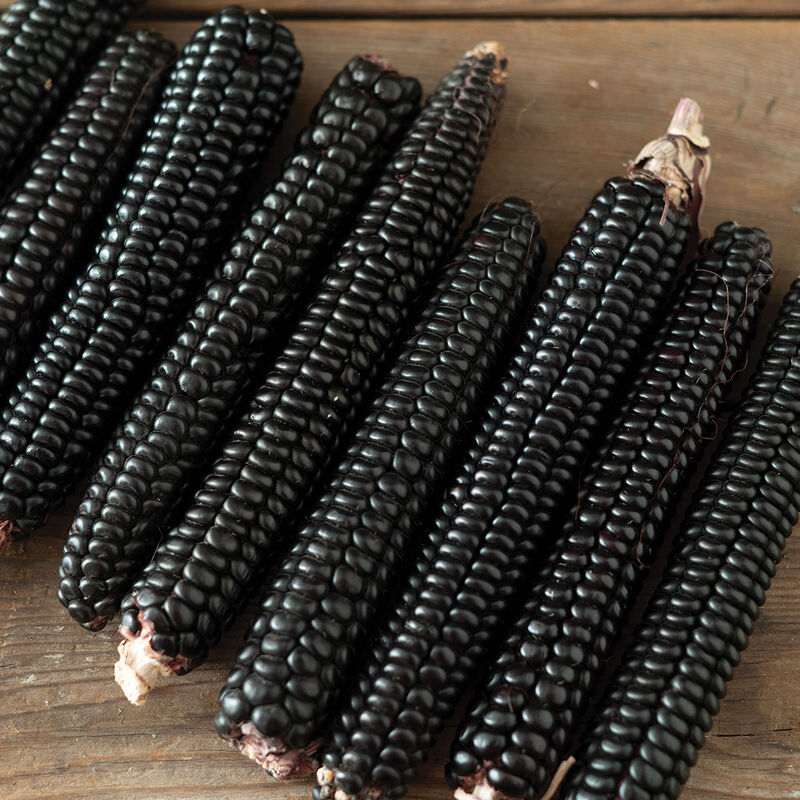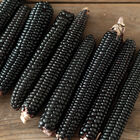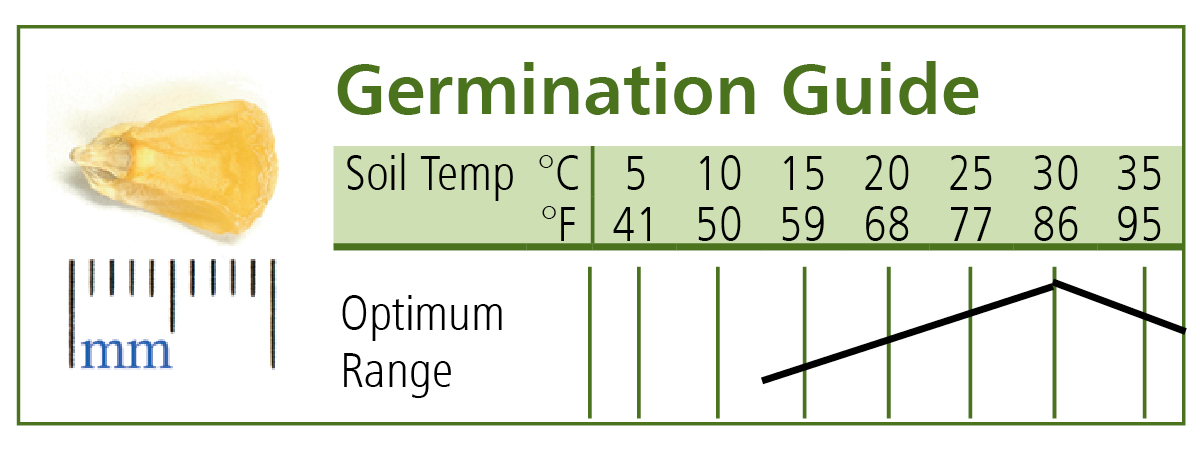Montana Morado Maize Organic Corn Seed
Montana Morado Maize Organic Corn Seed
Take advantage of our overstock position! The color of midnight.
Fetching, dark purple kernels with great healing potential from a beautiful, drought-resistant corn that matures early, even in the North. Spurred by a vision, devoted corn breeder Dave Christensen has worked over 30 years to create a variety with the highest antioxidant content possible. A Navajo elder told Dave that the black kernels are "for healing," and so he selected for the darkest kernels from grain corn grown in Montana and the surrounding states. One year, Dave and organic farmer Ole Norgaard grew 10 acres — just so they could select from the plants with the blackest kernels! Selected from Dave's previously released corn variety, Painted Mountain, Montana Morado Maize's ancestors have lived in the harsh Montana climate for hundreds of years. They endured short seasons, cold springs, cold falls, and summer droughts. Seed for this hardy corn is produced organically in Montana. It makes excellent cornbread because it is a rare, soft-flour starch that grinds easily. Boil it to make pozole, polenta... the culinary applications are endless. Loosely translated, the name "Montana Morado Maize" means "purple corn from Montana." It is a rare treat to have such a beautiful, anthocyanin-rich variety adapted to latitudes so far north. Plants avg. 5–6' tall and yield 8–10" long thin, cylindrical ears. USDA Certified Organic.Specs:
- This product does not ship to the following countries: Australia, Japan, Republic of Korea, New Zealand, Thailand, Taiwan.
SCIENTIFIC NAME:
Zea maysCULTURE:
Ornamental and field corn can be planted in temperatures slightly cooler than sweet corn, which does best when soil temperatures are at least 60°F (16°C).DAYS TO MATURITY:
From date of direct seeding, though maturity dates will vary widely with weather conditions and planting dates. Use these figures to compare one variety to another, not to accurately predict maturity on a given day.DIRECT SEEDING:
Plant early to ensure maturity of kernels for a good, dry ripeness. Sow ¾–1" deep, 6–7" apart (or 2 seeds every 9", thinning to 1 plant), rows 30–36" apart. Increase this rate for untreated seeds. Arrange in blocks of at least 4 rows for proper pollination, which is needed for well-filled ears. Successive plantings can be made through early summer; most growers prefer to extend the season by planting a few varieties of different maturities.AVG. DIRECT SEEDING RATE:
Popcorn: ¾ lb./1,800', 1 lb./2,400 ft., 6 lb. (or 28,800 seeds)/acre at 2 seeds/ft. in rows 36" apart. Ornamental, Flour and Cornmeal: ¾ lb./600', 1 lb./800 ft., 18 ¼ lb. (or 29,200 seeds)/acre at 2 seeds/ft. in rows 36" apart.INSECT PESTS AND DISEASE:
Corn borers and earworms can be controlled with Bacillus thuringiensis (Bt). The best approach to borer control is prompt plowing in or removal and composting of cornstalks after harvest. Wireworms in the roots result from an excess of organic matter that hasn't broken down, such as sod and tilled-in mulch. They will not be a problem in stable humus conditions. Consult your local Extension office for Integrated Pest Management program information. To control raccoons, an electric fence with 3 strands placed at 3–4" normally provides adequate control.HARVEST:
Ears can be picked when the kernels are hard and glossy, and the husk has mostly dried down. If necessary, bring husked ears under cover to complete drying. Popcorn should be harvested when kernels are fully mature (hard and glossy) or they won't pop well. After husking, spread out the ears in a dry, airy place and allow to "cure" for several weeks. The ideal moisture content for popcorn is 13–14.5%. Periodic test-popping will tell you when the kernels are dry enough to store, either on the cob or shelled.SEED SPECS:
See individual varieties.PACKET:
100 seeds, sows 50'.Johnny's is committed to your success, every step of the way.
We want you, our customer, to be 100% satisfied with all of our seeds, tools, and supplies.
If anything you purchase from us proves unsatisfactory, we will either replace the item or refund the purchase price.






